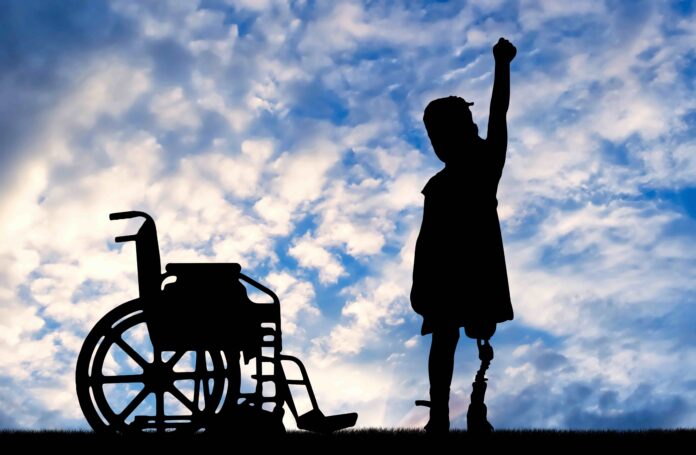Breaking Barriers: Empowering Voices to Fight for Disability Rights
The Importance of Disability Rights
Disability rights are the protections and freedoms guaranteed to people with disabilities so that they may enjoy the same opportunities and quality of life as those without disabilities. It’s important to understand why disability rights exist and why they are essential. Imagine if you were a person with a disability, and every time you tried to access public transportation or enter a building, you were met with physical barriers that prevented your participation in society.
Or imagine being denied a job opportunity solely because of your disability. These are just a few examples of the types of discrimination people with disabilities have faced throughout history.
People with disabilities have been systematically excluded from society for too long. Disability rights movements around the world have sought to challenge this exclusion by advocating for equal treatment under the law and ensuring access to necessary accommodations in all areas of life.
What are Disability Rights?
Disability rights refer to the legal and social rights that people with disabilities have, ensuring they are treated fairly and equitably in all areas of life. These rights include access to employment, education, transportation, public spaces and services, healthcare facilities, and many others.
However, it wasn’t always this way. The history of disability rights is one that is fraught with challenges.
Prior to the passage of disability rights laws such as the Americans with Disabilities Act (ADA) in 1990, many individuals with disabilities faced severe discrimination daily. They were often excluded from public spaces and denied basic human rights such as access to education or healthcare.
The ADA helped to change all of this by mandating equal opportunities for people with disabilities. Disability rights should not be confused with special treatment or accommodations for people with disabilities; rather they provide individuals with disabilities the same opportunities available to those without disabilities.
Despite legislation being in place ensuring equality and protection under the law for people living with a disability there are still examples of discrimination against them today. Employment is a significant area where individuals continue to experience discrimination – either through being rejected for promotion or not hired at all due to their disability even if they would be able to carry out job tasks perfectly well.
Other examples include exclusion from social events, physical barriers that limit their mobility such as lack of ramp access etc., as well as negative stereotypes regarding intelligence and ability. Through enforcing these laws we can ensure that everyone – regardless of their abilities – can live full lives on an equal footing- enjoying more freedom than ever before!
Empowering Voices for Disability Rights
Importance of self-advocacy for people with disabilities
Self-advocacy means speaking up for oneself, and it’s crucial for people with disabilities to do so in order to ensure their rights are being respected. Unfortunately, many individuals with disabilities face barriers that prevent them from advocating effectively on their own behalf.
One common challenge is communication. For individuals who have difficulty speaking or using traditional communication methods, it can be difficult to express their needs and wants clearly.
However, there are alternative communication methods available, such as sign language or assistive technology devices. Another barrier is lack of knowledge about one’s rights.
Many people with disabilities are not aware of the laws and policies that protect them from discrimination or guarantee them equal access to things like education and employment. This lack of knowledge can make it difficult for individuals to advocate effectively on their own behalf.
Ways to empower individuals with disabilities to speak up for their rights
There are several ways that individuals with disabilities can be empowered to advocate more effectively: 1. Education- Educating individuals with disabilities about their rights is an essential first step in empowering them to self-advocate. This includes teaching them about laws such as the Americans with Disabilities Act (ADA) and the Individuals with Disabilities Education Act (IDEA).
Providing resources such as accessible information on legal rights can help increase awareness. 2. Peer Support – It is important that people with disabilities have a strong support system around them who can provide guidance and advice when needed.
Peer support groups offer a great platform where like-minded disabled people come together and share experiences while supporting each other through different challenges they face. 3 . Training – Training programs designed specifically for people with disabilities help build skills necessary for self-advocacy including public speaking, assertiveness training etc.. The training sessions should also include ways to communicate effectively and use advocacy tools to their advantage.
4. Accessible Technology – With advancements in technology, individuals with disabilities can now access a variety of assistive devices that can help them communicate and interact more effectively. These technologies include speech-to-text applications, text-to-speech applications, and communication devices.
Providing access to these technologies ensure everyone has the chance to speak up for themselves. 5. Partnership with Disability Advocacy Groups – Collaborating with organizations that advocate on behalf of people with disabilities is an excellent way to amplify voices.
These groups provide resources and support needed for effective advocacy campaigns while ensuring people’s rights are protected. Empowering people with disabilities must be a constant effort; it’s only when everyone stands together will we see changes in the law, policies and attitudes towards people with disabilities.
Fighting for Disability Rights
Overview of Disability Advocacy Groups and their Work
There are numerous disability advocacy groups at the local, national, and international levels. These groups work tirelessly to promote the rights of people with disabilities and to address issues faced by this often marginalized demographic. Some popular disability advocacy groups include the National Disability Rights Network (NDRN), American Association of People with Disabilities (AAPD), and Disabled American Veterans (DAV).
The NDRN is a nonprofit organization that provides legal representation and advocacy services to people with disabilities across the United States. The AAPD is a national cross-disability organization dedicated to promoting equal opportunities, economic power, independent living, and political participation for people with disabilities.
DAV is a nonprofit organization in the United States that offers support to veterans who have become disabled while serving their country. These advocacy groups work on a variety of issues such as accessibility, employment discrimination, housing discrimination, education, healthcare access, transportation access and many more.
Examples of Successful Disability Rights Campaigns
One successful disability rights campaign was led by ADAPT (American Disabled for Attendant Programs Today). In 1990 they organized protests across the United States which resulted in changes in federal laws making it easier for individuals with disabilities to live in their own homes instead of being institutionalized. Another successful campaign was led by the National Federation of the Blind (NFB) and other disability rights organizations against Netflix for not providing closed captioning on all its programming.
In 2014 Netflix announced that it would improve its closed-captioning services for its users. In 2018, The Americans With Disabilities Act Education And Reform Act was introduced in Congress.
The bill proposed changes that would make it harder for individuals with disabilities to sue businesses that were non-compliant with ADA standards. Disability rights advocates mobilized across social media platforms to protest against the proposed legislation, which resulted in the bill being defeated.
Advocacy groups continue to work tirelessly for disability rights, but there is much more work to be done. It is important that we support these organizations and amplify their voices so that people with disabilities are not left behind.
Challenges in Achieving Disability Rights
Barriers Faced by People with Disabilities in Accessing their Rights
Despite the progress that has been made in the fight for disability rights, there are still significant barriers and challenges faced by people with disabilities in accessing their rights. One of the biggest hurdles is attitudinal barriers, which refers to negative attitudes and stereotypes towards people with disabilities that can lead to discrimination and exclusion.
This can manifest in a variety of ways, from inaccessible physical spaces to limited job opportunities. Another major challenge is lack of accessibility.
Many buildings, public transportation systems, websites, and other services are not designed with disability access in mind. This can make it difficult or even impossible for people with disabilities to fully participate in society on an equal basis with others.
There are systemic barriers that prevent people with disabilities from accessing their rights. These include policies and practices within organizations or government agencies that limit access or create unnecessary hurdles for people with disabilities.
Discussion on How to Overcome These Challenges
Overcoming these challenges will require a multifaceted approach that involves individuals, organizations, and governments working together towards creating more inclusive communities. Some solutions include:
– Education: Encouraging education around disability issues can help break down attitudinal barriers towards people with disabilities. – Accessibility Standards: Creating accessibility standards across various industries including IT infrastructure could significantly help improve the quality of life for disabled individuals.
– Advocacy: Encouraging advocacy campaigns could bring attention into the issues faced by disabled individuals; this will create awareness among society as well as provide exposure to potential solutions such as assistive technologies. – Government Policies: By adopting policies that explicitly promote inclusion and equal access for all citizens will go a long way towards creating an equitable society where everyone has the opportunity to thrive regardless of any physical or mental conditions.
Disability rights are fundamental to ensuring that people with disabilities have equal access to opportunities and can fully participate in society. While there are still significant challenges that need to be addressed, it is our collective responsibility to work towards creating a more inclusive world where everyone can live their lives with dignity and respect.
Conclusion
Disability rights are essential for creating an inclusive and equitable society. People with disabilities deserve the same opportunities, respect, and dignity as everyone else.
As we have seen in this article, disability rights are not just about physical accessibility or accommodations but also about ensuring that individuals with disabilities have equal access to education, employment, healthcare, and other basic human rights. Everyone can contribute to the fight for disability rights in their own way.
It starts with educating ourselves on the issues faced by people with disabilities and how we can be allies. Even small steps like using person-first language or advocating for accessible design in our workplaces can make a big difference.
One way to get involved is by supporting disability advocacy groups such as the National Disability Rights Network or Disability Rights International. These organizations work tirelessly to protect and promote the rights of people with disabilities around the world.
If you have a personal connection to disability or feel passionately about this issue, consider volunteering your time or making a donation to support their work. Another way to make a difference is by supporting politicians who prioritize disability rights legislation and policies.
Attend town hall meetings or reach out directly to your representatives to voice your support for initiatives like improving accessibility standards or increasing funding for programs that benefit people with disabilities. We can all do our part in creating more inclusive communities by challenging ableism whenever we see it and elevating the voices of people with disabilities.
By listening and learning from those who experience discrimination firsthand, we can build a more just society where everyone has an opportunity to thrive. So let’s commit ourselves to fighting for disability rights today so that tomorrow will be brighter for all individuals regardless of ability status!



